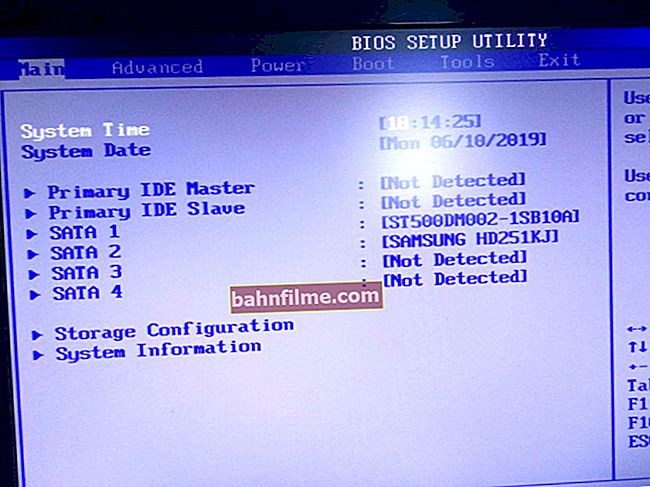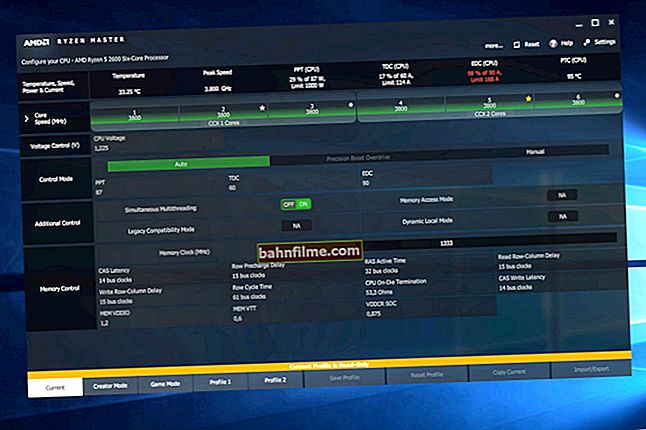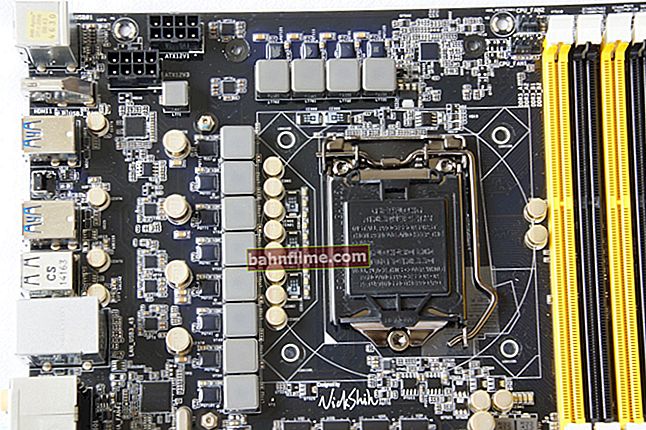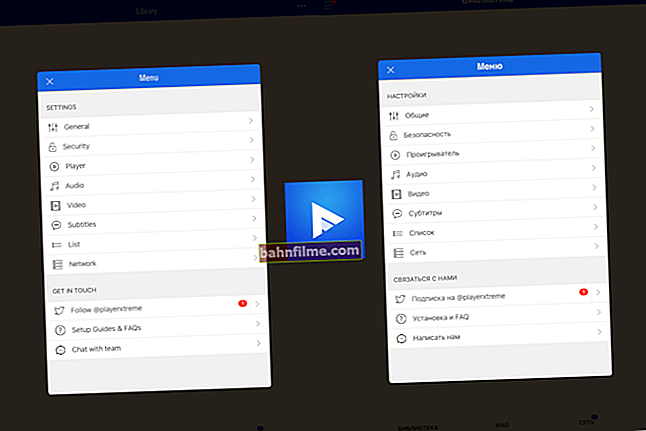 Good time!
Good time!
Windows users (including the new 10-ki) periodically need to change enlargement or attributes file. For example, this may be required to open a file in a specific program, or to edit, delete, etc. Actually, this post will be devoted to their change ...
And, as I think, you need to start with a short explanation (so that everyone correctly understands what is at stake ...).
File extension - these are 3 ÷ 4 characters added to the file name (for example, "filename.docx", "File name.mp3"and others), which allow Windows to determine the file type and" work with it correctly. "For example, if the file extension is" mp3 ", Windows" recognizes "that it is music and opens the file in the player.
By the way, by default Windows hides the most common extensions from the user and you only see the file name. That is why most users find it difficult to change the extension ...
Attributes - this is a special. data that tells the system what operations can be performed on a file (folder). Each file has its own attributes. An attribute can be in two states: checked and unset (i.e. whether the checkbox is checked or not). For example, if a file has the "hidden" attribute set, then Windows Explorer will not show it to you ...
Now let's get down to practice ...
*
Extension change
❶
One file (via explorer)
Let's imagine the most common situation. You are trying to set a picture as an avatar, but the service shows you an error and says that they only accept JPG.
Then you go into the folder and look at your picture - and you don't understand anything ... It seems that the image is like an image, what's wrong? (note that the file in the example below does not have an extension)

Example picture
To find out the file extension, you can simply open file properties (just right-click on the file to open the context menu). See example below - the file type is set to PNG.

Properties - File Type
Now let's try changing the file type from PNG to JPG.
1) First, we need to go into the parameters of the conductor. This can be done quite easily: by opening any of the folders on the disk - click in the top menu on the tab "View" and then go to the section "Parameters" (see example below).

View Menu - Options (Windows 10 Explorer) / Clickable
2) Next in the tab "View" uncheck the box "Hide extensions for registered file types" and click OK (example below).

Uncheck Hiding Extensions ...
3) After that you will see that after the file name its extension appears. Now you can just change it, just like the file name. In my example, I change PNG to JPG.

Change PNG to JPG
4) After opening file properties , you will see that its type has changed (at least for Windows). In general, the task is completed.

The file type has been changed
Important!
By changing the extension of a file, you do not change its "essence", you only tell the system how to work with it. This does not always help to resolve the issue ...
Those. by changing the PNG extension to JPG - we just indicated to the system that this is a different file type (but in fact it is not).
To get a real JPG file from PNG, you need to perform an operation converting (with the help of a graphical editor). Converters are now available both for photo and video, and for documents and other types of files.
❷
Multiple files at once (via Total Commander)
To operate with a large number of files, it is much more convenient to use a file commander instead of an explorer, for example, Total Commander (link to the official site). It is in it that I will show my example.
1) And so, let's imagine we have 5-10 (or more) files that need to change the extension.

File Type / Total Commander
2) The first thing to do is select all the files that you want to rename (note.: when selected, Total Commander will mark files in red).

Select all the necessary files
3) Then go to the menu "Files" and choose a tool "Batch rename" .

Batch rename
4) In line "Extensions" specify what you want (for example, I used "GIF"). Note that in the column "New name" shows what name the file will have after the changes made. If you are satisfied with these changes, just click "Run" .

Total Commander shows how the new file name will look after renaming ...
5) In general, that's all. Now all the selected files have a new extension. An example is in the screenshot below.

The file type has been changed
*
Modifying Attributes
In general, earlier in DOS and Windows there were 4 attributes:
- archive: if this attribute is set, it means that this file has already been modified since the last backup;
- hidden: when this attribute is set, Windows Explorer (and many other programs) will not show you these files / directories;
- system: files with this attribute Windows prohibits deleting, editing, and in every possible way tries to hide;
- read-only: This attribute says that the file cannot be edited or deleted (you can only read the information in it). Some programs ignore this attribute, others - take into account and ask the user for additional. permission to edit ...
After, there were additional. attributes:
- compressed: it is clear from the name - this file is stored in a compressed form;
- encrypted: similar (the file was encrypted by the OS for security purposes);
- indexed: indexing is used by Windows to speed up file searches on disk. When setting the attribute - the system will not include the contents of this file in the index.
Why you might need to change the attribute:
- to edit or delete a file (if your program "refuses" to do so, read-only);
- so that you can easily find hidden or system files;
- the opposite situation is to hide files from other users.
❶
Method 1
1) You can change the attributes of the file directly in the explorer (if, of course, you see the file ✌). Just open it properties by clicking on it with the right mouse button and selecting it from the context menu.

Properties / Explorer
2) In the tab "General" at the bottom of the window, you can check (or uncheck) the attributes that you need to change.

Attributes - read-only, hidden, and others
❷
Method 2
It is much more convenient to work with attributes using commanders (for example, the same Total Commander). I will consider working with him step by step ...
1) After starting the program, I recommend immediately turning on the display of hidden files (see arrow-1 in the screenshot below). Next, select the file (arrow-2) and click on the button "Change Attributes" (arrow-3).

Change Attributes (Total Commander)
Next, you will see a small window in which you need to put (or uncheck) the checkboxes opposite the attributes you need (unnecessary). Then click OK - the file attributes will be changed!
Note: to change the attributes of some files, you may need administrator rights.

Modifying Attributes
*
That's all for now. All a happy coming big holiday - Victory Day!
Good luck!
✌









